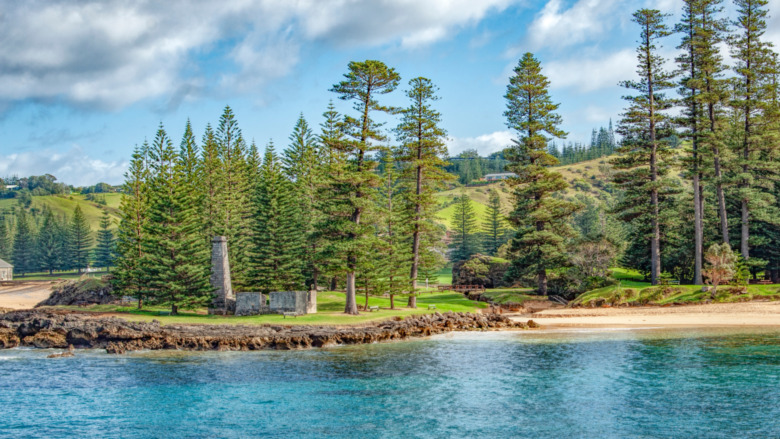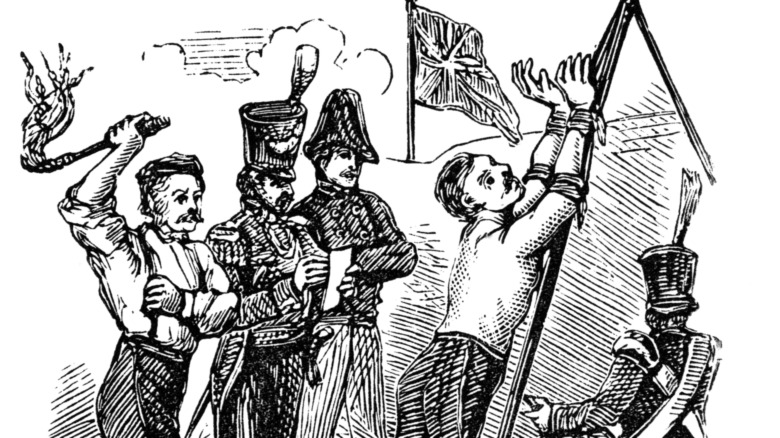The Harsh Truth About Norfolk Island
Norfolk Island is an Australian territory with a dark history. The island, which is located a little more than 1,000 miles from Sydney, was used as a penal colony for the "worst of the worst" during two different time periods, according to the Australia Post. The first was from 1788 to 1814 and then again from 1825 to 1855.
According to Research Data Australia, during the 1790s, there was much conflict between the convicts and the soldiers running the island prison and work camp. So, when British soldier and administrator Joseph Foveaux offered to go to the island and was appointed the new commandant in 1800, he did so with a sadistic hand, per the Australian Dictionary Biography.
Under Foveaux, the "military contempt for convicts would approach the level of mania," Research Data Australia reported. However, many stories about Foveaux's tactics and behavior during his 14 years as commandant and lieutenant-governor may have been made up. Still, according to the Australian Dictionary Biography, Foveaux was known for "the severity with which he crushed convict disturbances in 1801, and the dubious morality of allowing the sale of female convicts to settlers."
Author Robert Macklin wrote a book about the penal island called, "Dark Paradise: Norfolk Island — Isolation, Savagery, Mystery and Murder." According to The Irish Times he wrote, Foveaux had "sadistic lust to humiliate and inflict untold agony on the men and women under his control ... He started the island on the road to torture and terror."
Floggings, hard labor, and starving to death were all part of life on Norfolk Island
While the recorded grisly details of what really happened on Norfolk Island in some cases were exposed as being fictional pieces of writing passed off as nonfiction, according to the Australia Post, floggings were common for even petty misbehavior, barracks were grossly overcrowded, and hard agricultural labor was done with minimal tools and without domestic animals or machines to help. Food was hard to come by and of low quality, causing many to die.
According to The Irish Times, Macklin found in his research a twisted story in which 15 men were sentenced to death on the island after an attempted mutiny. Two well-meaning clergymen convinced the jailers to let some of them live, and upon being told they would live and stay on Norfolk Island as prisoners, they "wept and fell to the ground."
In order to make this situation more amenable to all, the jailers came up with a plan. Four of the imprisoned men would draw straws to determine who would be killed and which one of them would do the killing. The other two would watch and then testify at trial so that the one made to do the murder would be convicted and would also get the gift of execution, per The Irish Times.
The penal colony finally ended its brutal practices after Bishop Robert Wilson visited and wrote a report on the "appalling conditions," according to the Australia Post. It took eight years until the prison was closed for good in 1855.

